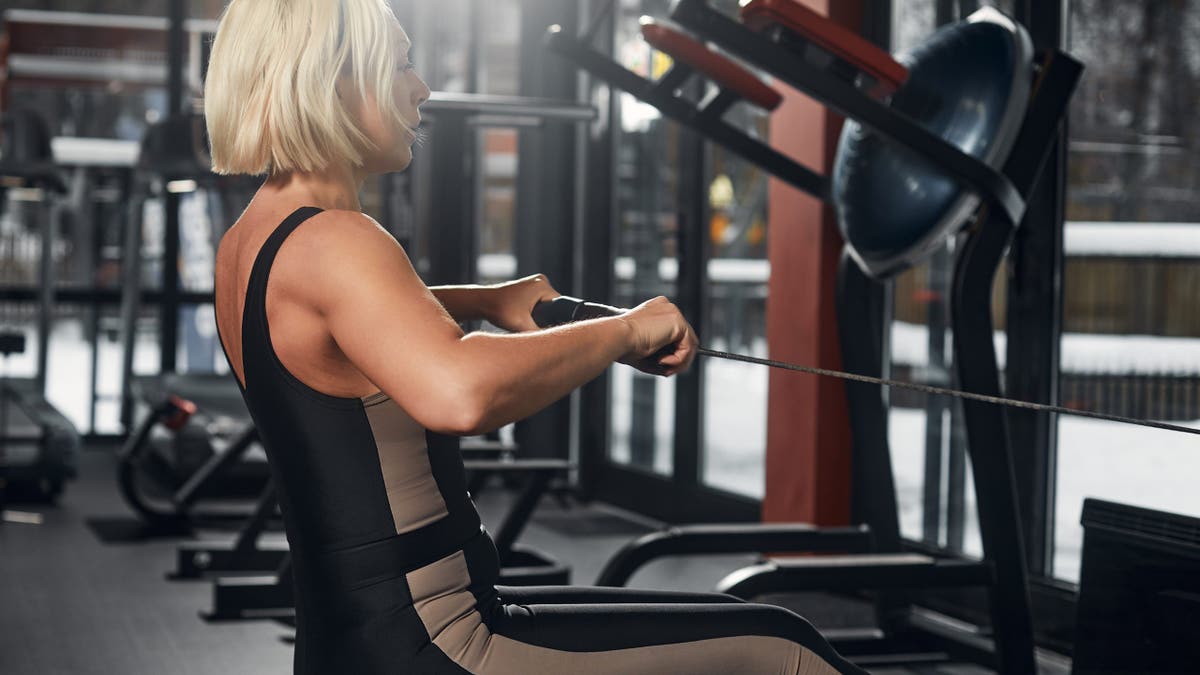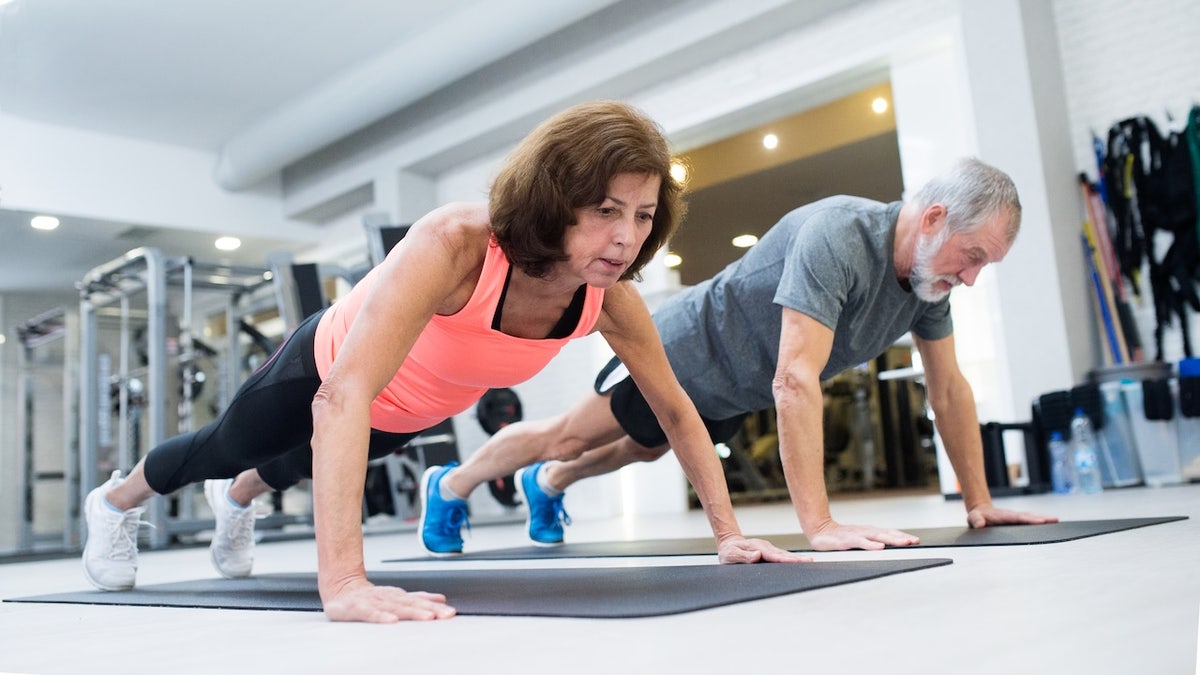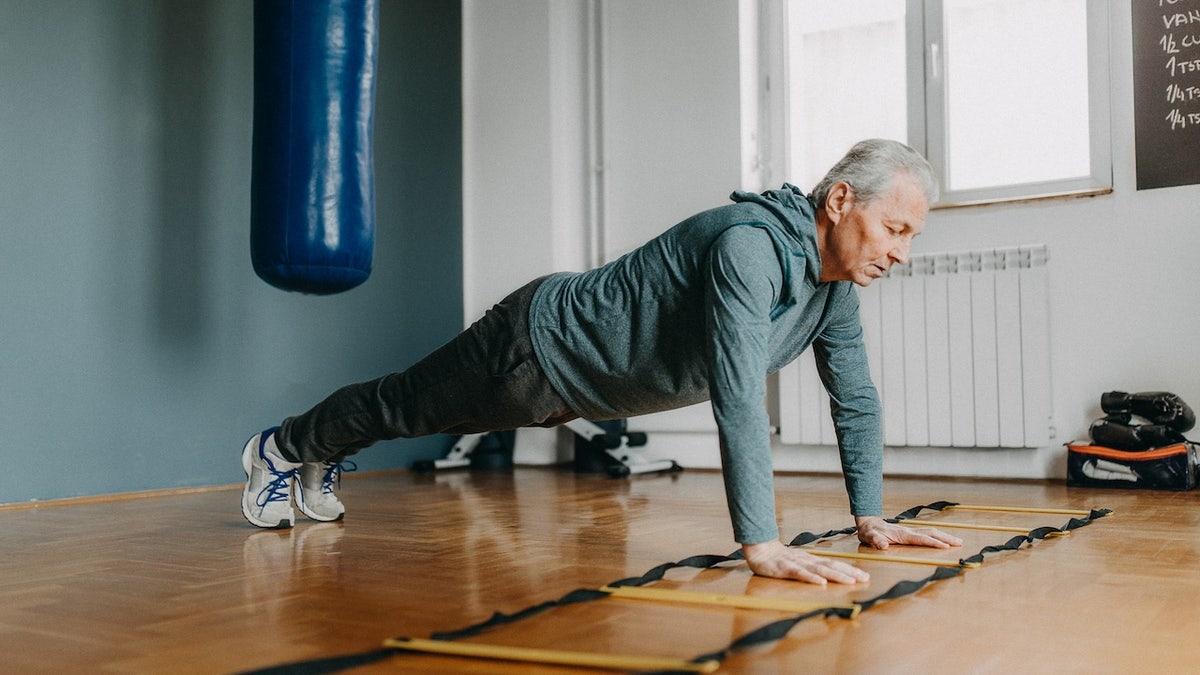NEWYou can now listen to Fox News articles!
Experts agree that exercise is vital to longevity and helps to preserve muscle mass, bone density and joint health as we age — but it’s important to approach workouts in the right way to ensure safe, optimal results.
The general guideline is for healthy adults to get 150 minutes of moderate or 75 minutes of vigorous aerobic activity per week, along with at least two days of strength training and activities to improve balance.
However, these recommendations should be modified to meet each individual’s physical abilities and conditions, according to the Centers for Disease Control and Prevention.
FITNESS EXPERT REVEALS 6 PILLARS OF STRENGTH TRAINING THAT OLDER ADULTS SHOULD MASTER
“Most adults are not failing in the gym because they are lazy — they are failing because no one ever taught them how to train for the stage of life they are in right now,” Marfred Suazo, a fitness professional known as Fonz the Trainer in New York City, told Fox News Digital.
“They keep doing the same workouts they did years ago and wonder why their back aches, their knees are sore and their progress has stalled.”
Fox News Digital spoke with fitness experts to identify some of the most common mistakes older adults make when working out — and how to avoid them.
Mistake No. 1: Training only what you see in the mirror
“Most people focus only on the chest, arms, quads and abs, because that is what they see in the mirror,” Suazo said. “But ignoring your back, glutes, hamstrings and core creates poor posture, weak links and, eventually, pain.”
OLDER ADULTS SHOULD TARGET THESE MUSCLES WHEN STRENGTH-TRAINING, SAYS FITNESS PRO
To counteract this, Suazo recommends training the muscles you cannot see — a strategy that he calls “non-mirror training.”
“Add rows, Romanian deadlifts, hip bridges, Paloff presses and farmer’s carries to your routine,” he advised. “This type of training builds strength that shows up in your posture, balance and the way you move every day.”
Mistake No. 2: Training like you’re still 25
Orrie Markfeld, a personal trainer at Life Time Garden City in New York, said a common mistake he sees is older adults trying to work out with the same intensity and volume as when they were younger, which often leads to overuse injuries and burnout.

“The solution is simple: train smarter,” he recommended to Fox News Digital. “Follow principles of progressive overload and proper mechanics, and make recovery days a priority.”
“Longer warm-ups, mobility prep and respecting rest go a long way toward preventing setbacks.”
Mistake 3: Relying only on cardio
“Walking, biking and spin classes are great, but if you avoid strength training, you lose muscle and power with every passing year,” Sauzo told Fox News Digital. “That makes you more likely to get hurt and slows recovery.”
Building muscle helps protect the joints, speeds up metabolism and ensures strength for life, according to the expert.
“They keep doing the same workouts they did years ago and wonder why their back aches, their knees are sore and their progress has stalled.”
Suazo confirmed that adults should strength-train at least two times per week. “Start light, master the form and progress slowly,” he recommends.
Markfeld agreed that many older adults stick only to cardio, thinking it’s all they need.

“The problem is, skipping resistance training accelerates muscle and bone loss, which are critical for staying active and independent,” he reiterated.
“Including two to three days a week of strength and resistance-specific work is ideal. This can be as simple as bodyweight movements, resistance bands or dumbbells, focusing on compound/functional movements like squats, pushes and pulls.”
Mistake 4: Skipping warmups
Going straight from sitting at a desk to lifting weights is a recipe for injury, according to Suazo.
“Cold muscles and stiff joints make even simple exercises harder than they should be,” he warned.
HOLLYWOOD ICON HAS USED THE SAME 12-MINUTE WORKOUT ROUTINE SINCE THE 1960S
To help ensure a safe, successful workout, Suazo recommends spending five minutes preparing your body. This can include walking as well as doing hip openers, shoulder circles and a few bodyweight squats.
“You will lift better, feel better and recover faster,” the expert said.
Mistake 5: Moving too fast or lifting too heavy
“Fast, sloppy reps and ego lifting are the reason most people end up with sore shoulders and bad backs,” Suazo cautioned.
The trainer emphasized the importance of slowing down.
“Choose a weight you can control, move with intention and feel the muscles working,” he said. “Controlled reps will keep you safe and build strength you can use.”
Mistake 6: Forgoing recovery
“If you are sore all the time, you are not getting stronger, you are just breaking your body down,” Suazo said. “Strength is built when you recover, not just when you train.”

It’s important to make recovery part of your plan, the expert advised. This can include walking, stretching, taking an active recovery day and getting quality sleep.
“Your body will reward you by coming back stronger.”
Mistake 7: Neglecting mobility and stability
“Many people overlook mobility and balance work,” Markfeld noted. “These decline naturally with age and are major factors in injury risk.”
“Focus on non-mirror training, slow your movements down and respect your recovery time.”
He suggests dedicating 10 to 15 minutes of every workout to joint mobility, core stability and balance exercises.
“Simple drills like ankle mobility before squats or single-leg balance work can have a huge payoff in long-term health,” Markfeld said.
For more Health articles, visit www.foxnews.com/health
Overall, Suazo said, training as you age is not about doing more — it is about doing it right.
“Focus on non-mirror training, slow your movements down and respect your recovery time. When you train this way, you will move better, feel younger and keep doing the things you love without pain holding you back.”
Read the full article here










